Setup time: 6 Min
- Create a New Relic integration on the AllQuiet platform to obtain a webhook URL.
- Use this URL in New Relic to create a workflow with a webhook destination.
1. Create a New Relic integration on AllQuiet
1.1 Create an Integration on All Quiet
- Click on the
Integrations > InboundTab. - Click on
Create New Integration.
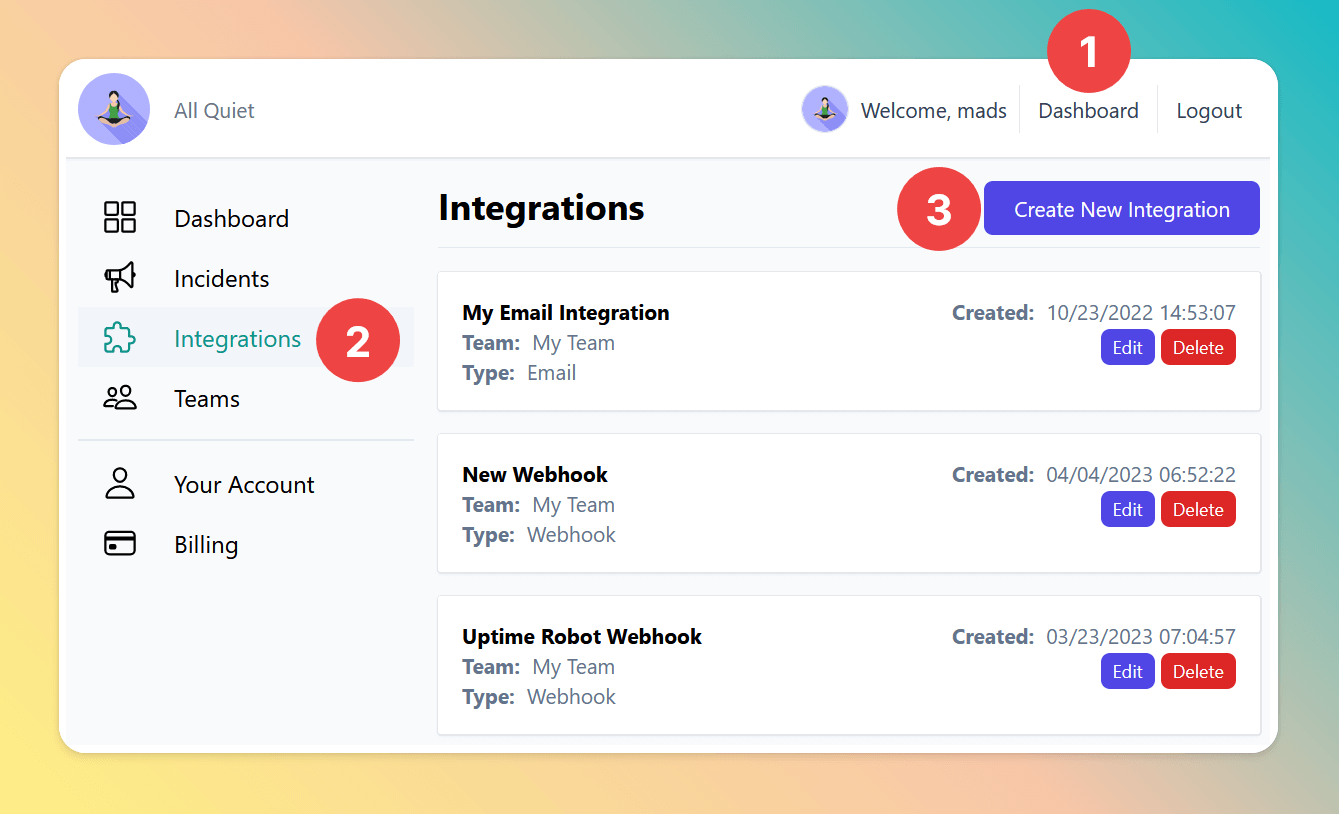
1.2 Select New Relic for the integration’s type
- Enter a display name for your Datadog integration, e.g. “New Relic Webhook”.
- Select
New Relicas the type. - Click
Create integration.
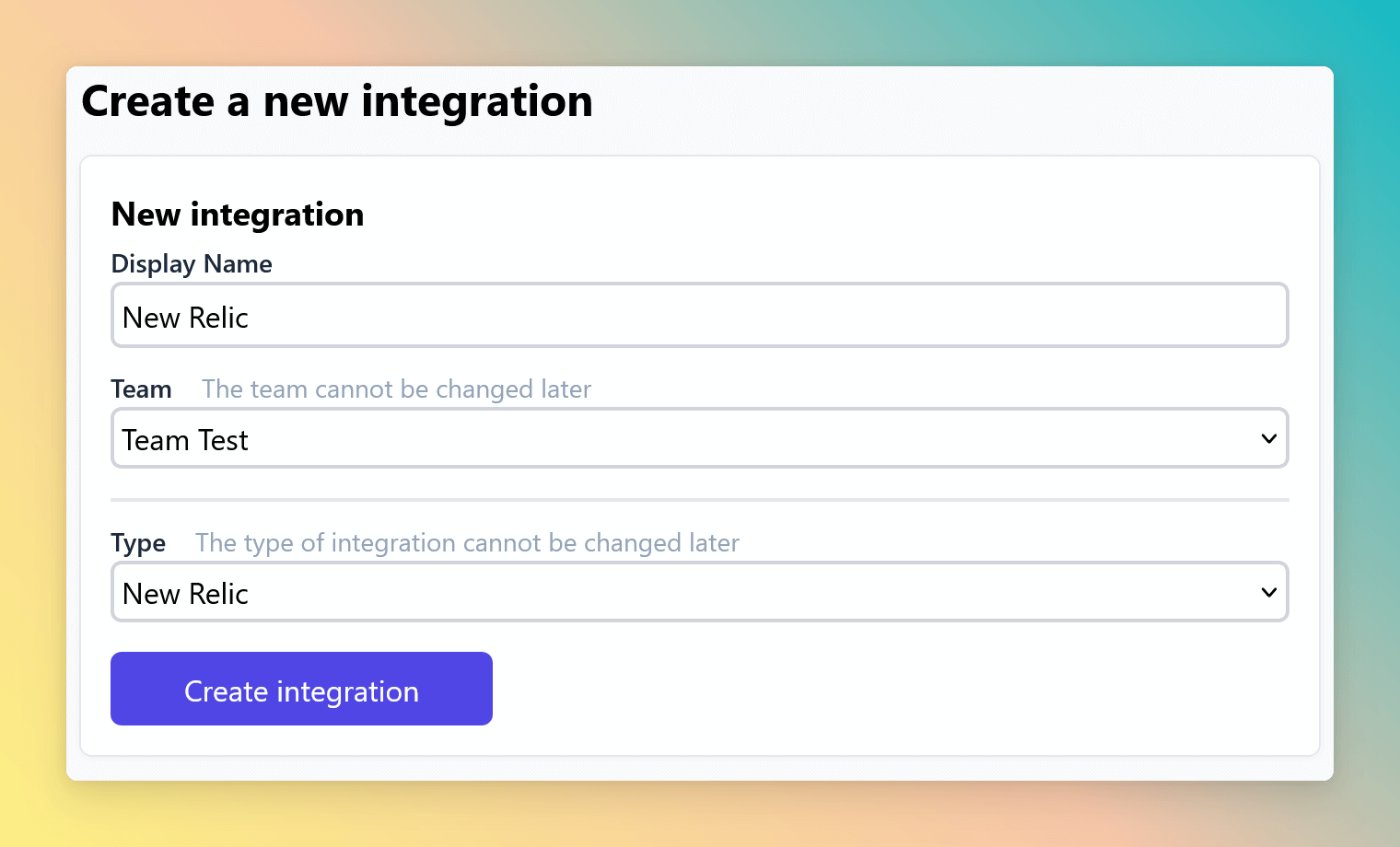
1.3 Get the All Quiet webhook URL
Copy your webhook URL. You’ll need it later on the New Relic platform.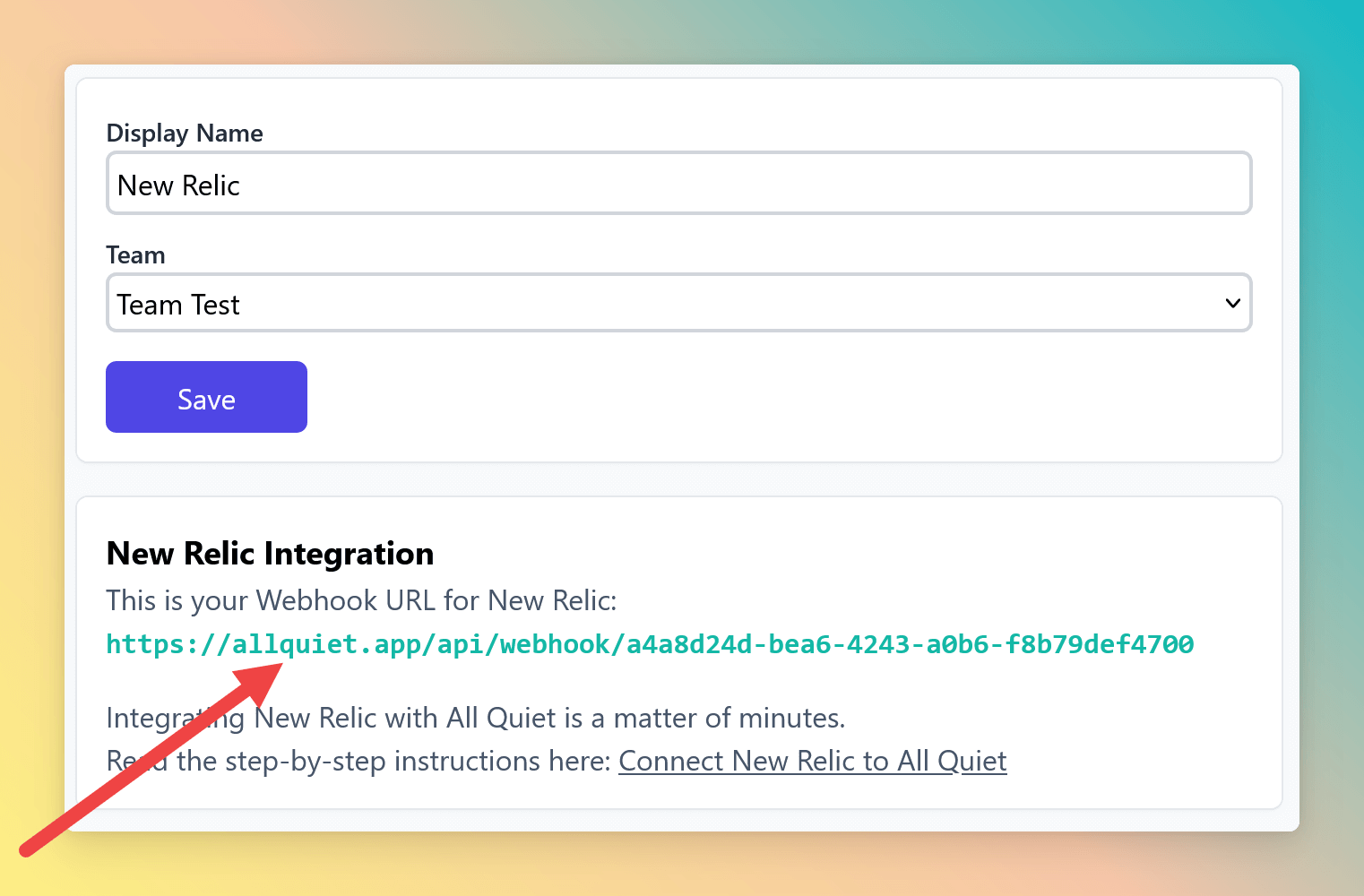
2. Create a New Relic workflow with a webhook destination
The following steps will be done on the New Relic platform. So, log in to New Relic with your account.2.1 Create an Alert Condition
- Go to Alerts & UI -> Alert Conditions (policies)
- Create an alert condition that you’d like to monitor. In the example provided, a condition has been added to monitor if the CPU load is above 50%.
- Navigate to the Notification settings tab
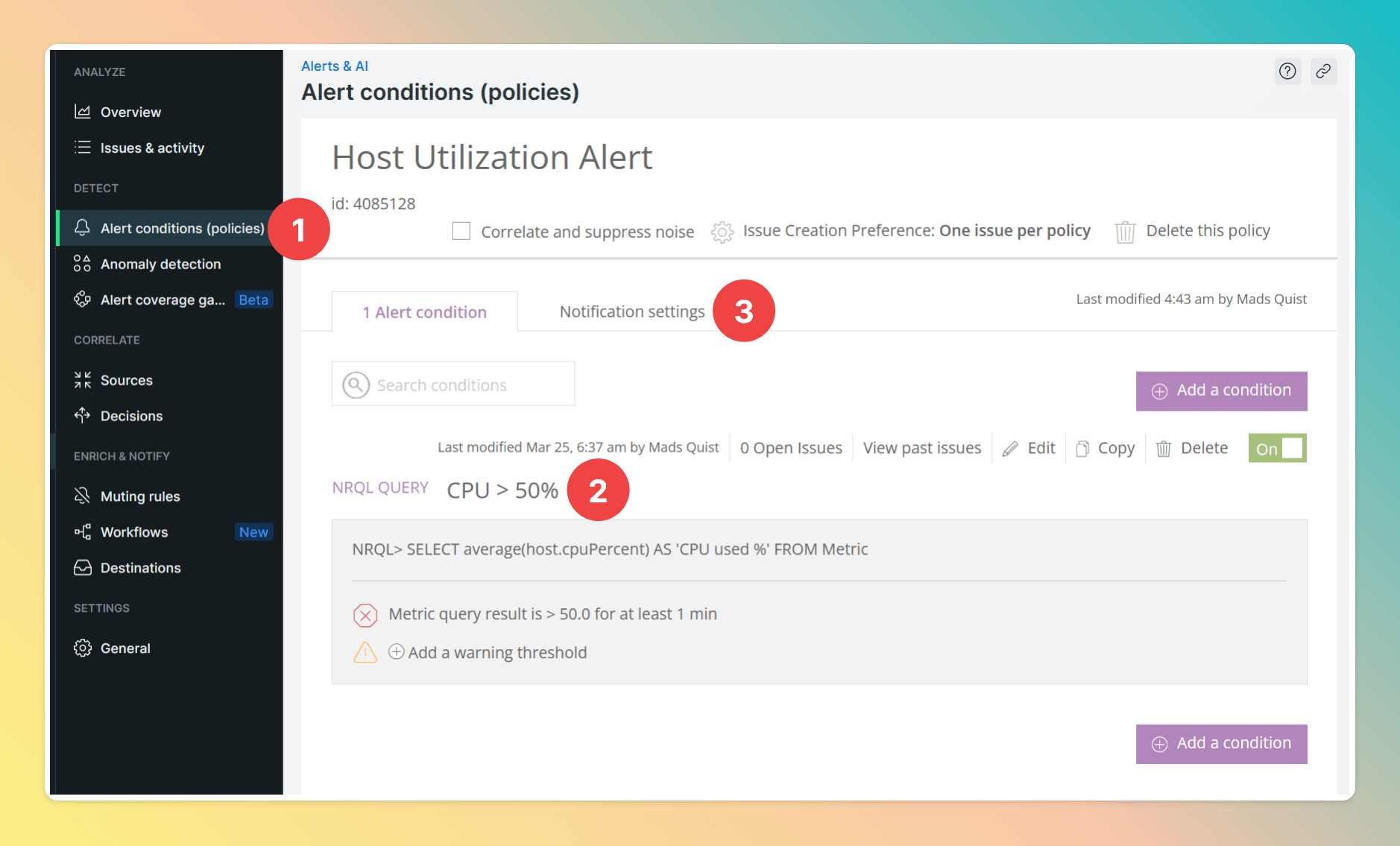
2.2 Create a workflow
In the Notification settings, clickCreate workflow
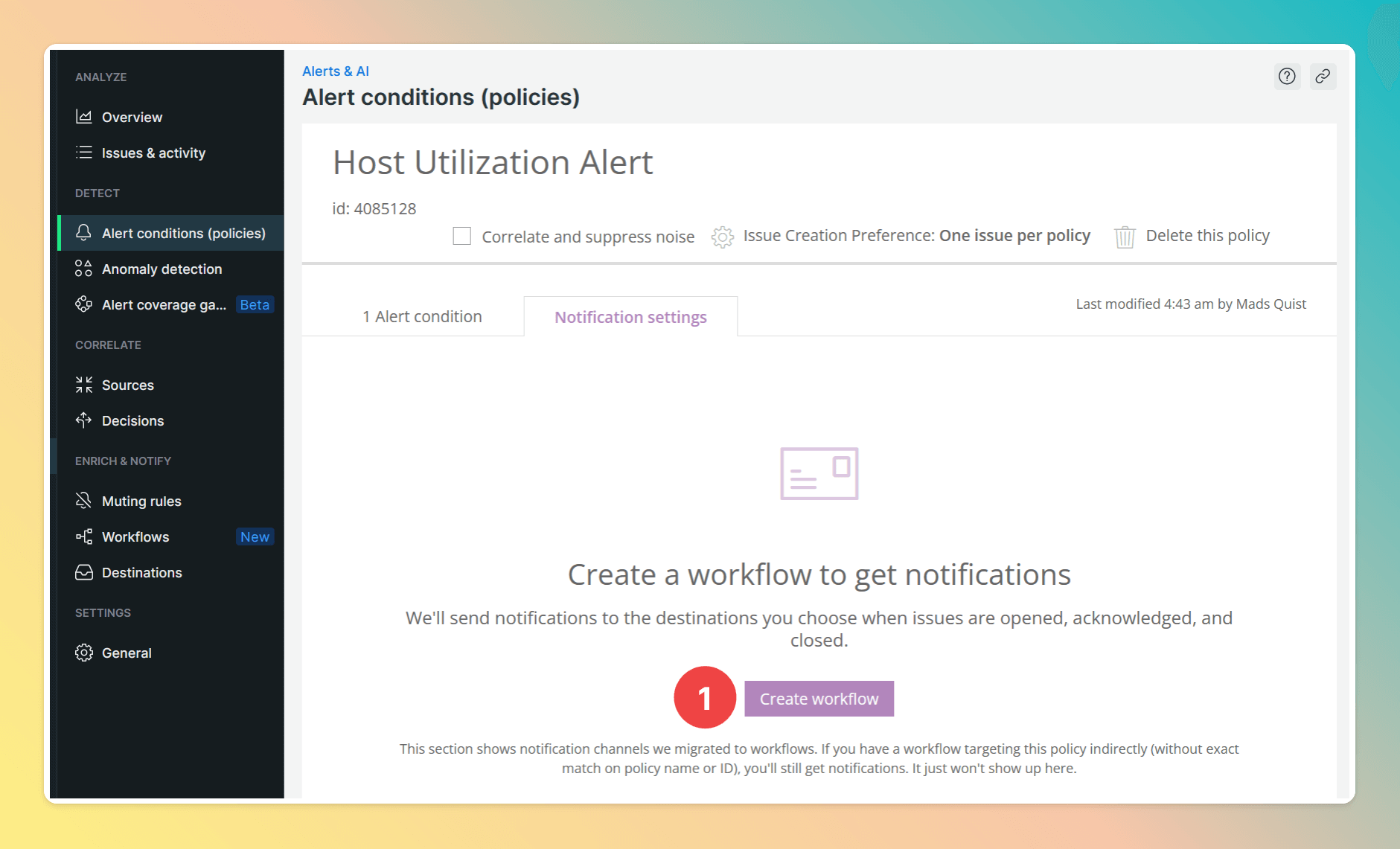
2.3 Add Webhook channel
Click onWebhook to add a webhook notification channel
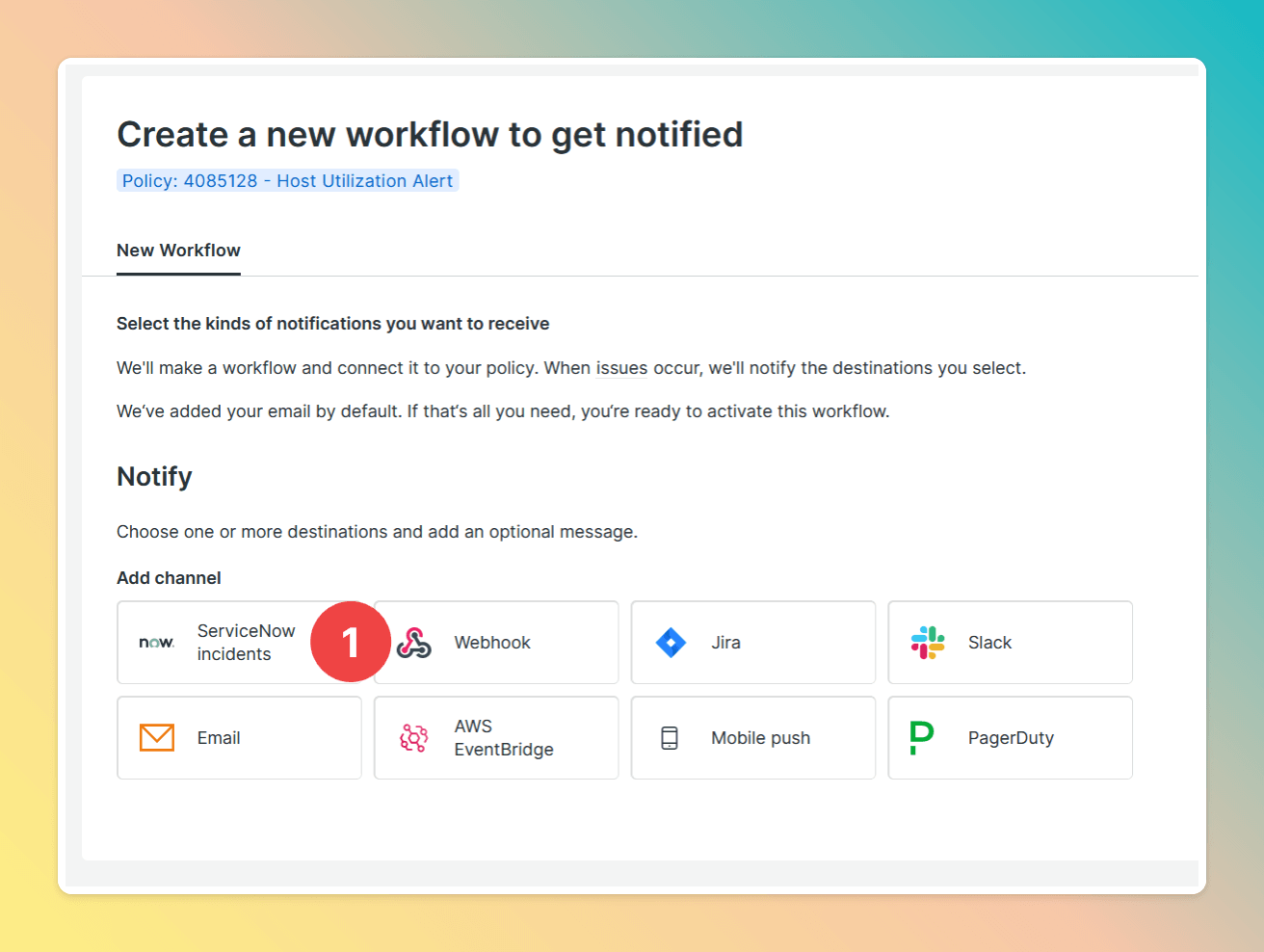
2.4 Add a destination to Webhook channel
- Enter a channel name, e.g. “All Quiet Channel”
- Click on “Add a destination” to configure the destination (Webhook)
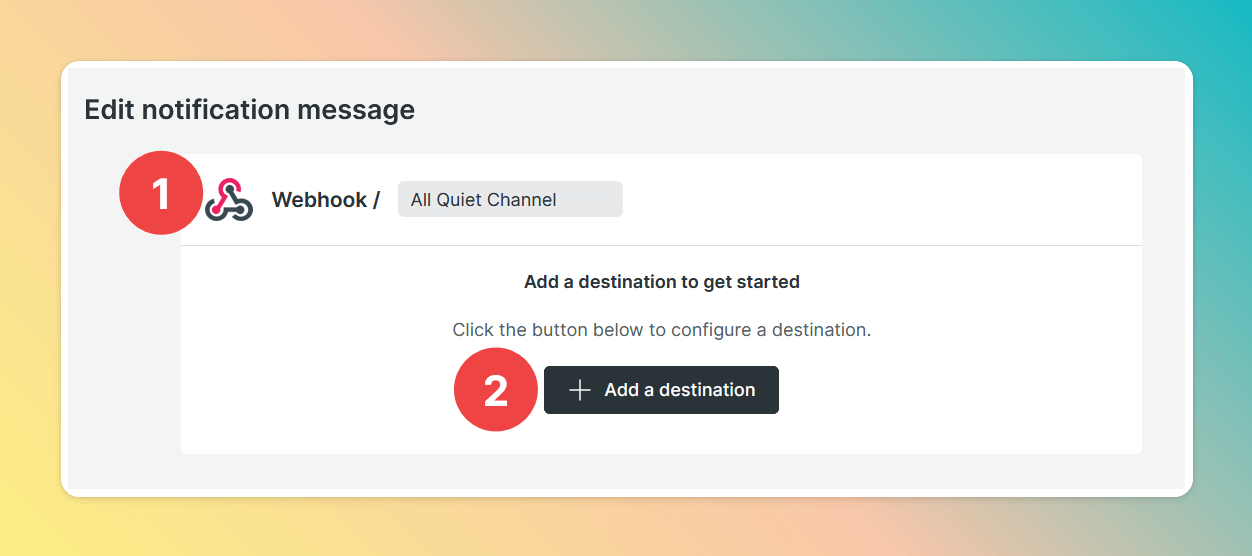
2.5 Configure Webhook channel
- Enter a name for the Webhook, e.g. “All Quiet Webhook”
- Paste the All Quiet webhook URL from step 1.3. into Endpoint URL
- Click “Save destination”

2.6 Finish editing notification message
- Now that you’ve configured a new destination, select the corresponding item for the “Destination” field.
- Click
Send test notification. It’s helpful to send a test notification to All Quiet so you can easily map the message payload on the All Quiet platform. - Click
Save message.
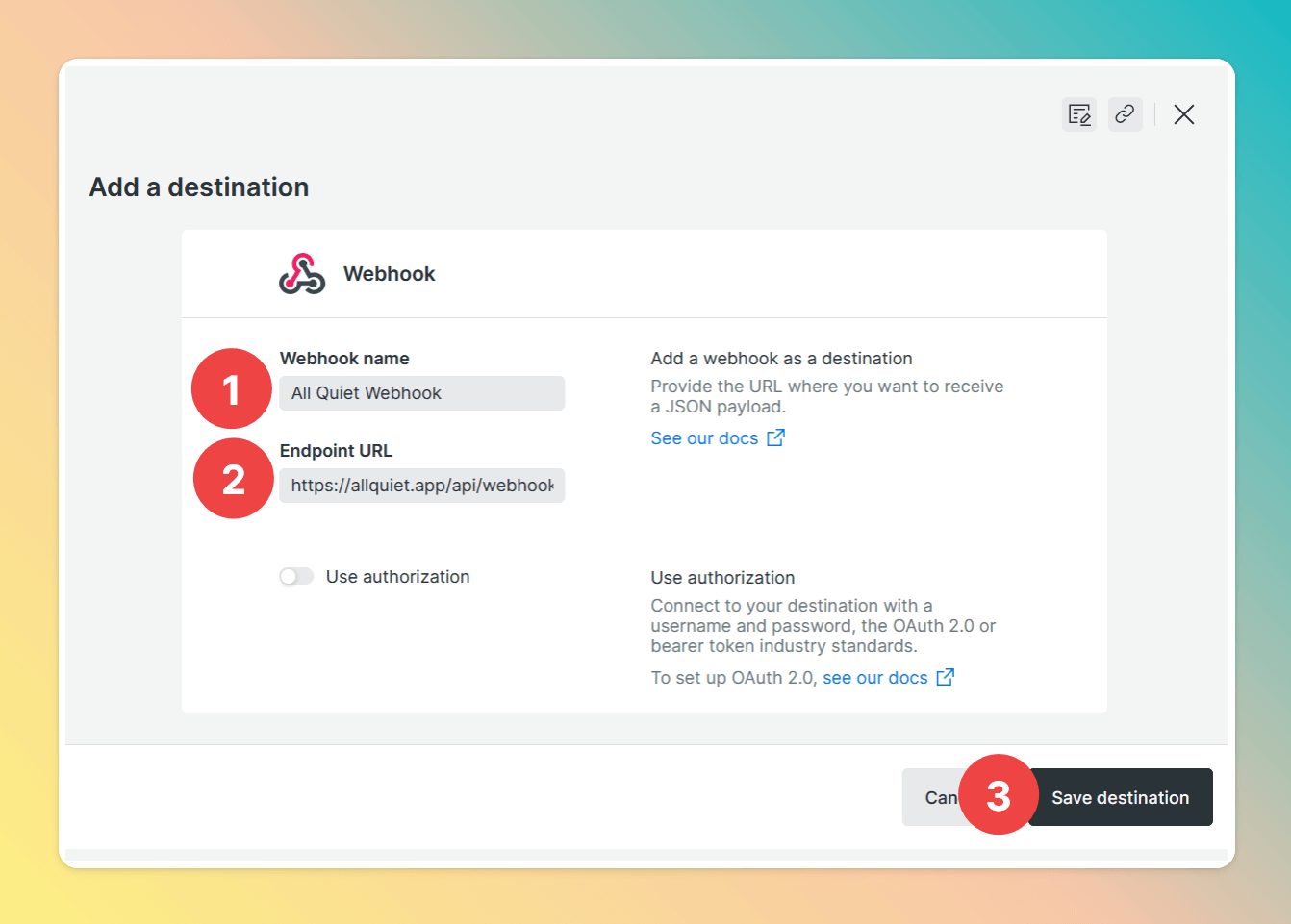
2.7. Active your workflow
ClickActivate Workflow. Don’t forget this step, otherwise, your workflow won’t work!
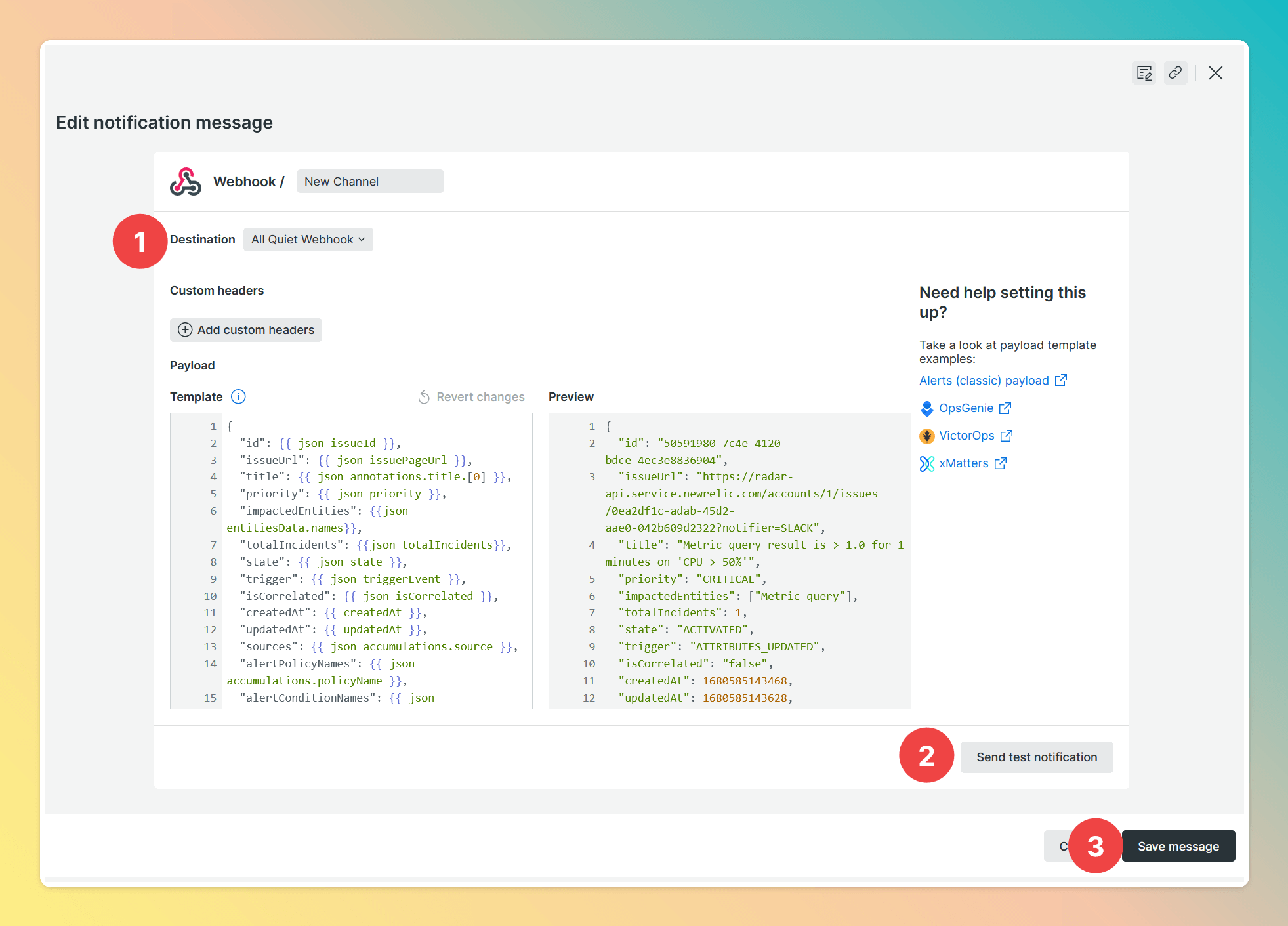
3. Test the New Relic notification message payload
You’re almost done. 🥳 You can now test how New Relic’s palyoad maps to your All Quiet incident:3.1 Load New Relic Payload
Go back to your All Quiet New Relic integration that you’ve created in step 1.2.- Click
Reloadto load the test notification payload New Relic sent to All Quiet. - Click
Loadto load the payload. - Take a look at the incident at the bottom. It should be correctly mapped from New Relic’s test notification.

Webhook integration with New Relic is now successfully configured on All Quiet, enhancing incident response efficiency.